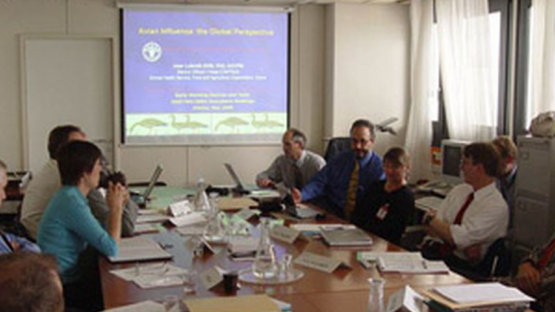The Chinese Center for Disease Control and Prevention has published genetic sequences of H7N9 identified in humans confirming that it is derived from avian influenza viruses. Preliminary data indicates that the H7N9 avian virus has mutated in poultry over time allowing it to adapt and grow at the normal body temperature of mammals.
Since the H7N9 avian influenza virus is sub-clinical in poultry (i.e. infected or carrier birds look healthy and normal but pose a risk to in-contact humans), the Joint FAO-IAEA Division’s Animal Production and Health Laboratory (APHL) is investigating the use and adaptability of early and rapid molecular diagnostic technologies to identify poultry that are infected or that carry the H7N9 virus. The diagnostic primers and probes available to amplify both the Matrix and H7 genes of the Chinese H7N9 by real-time PCR are based on published sequences, but it is still important to determine whether these reagents will detect all variable gene sequences circulating in poultry. The Animal Production and Health Laboratory at Seibersdorf is ready to support Member States on this problem in several ways:
- Provide surveillance and sampling guidance and advice
- Provide real-time PCR standard operating procedures (SOPs) for the early and rapid diagnosis of the H7N9 avian influenza subtype in poultry, and associated capacity building and training
- Provide technical and expert services (advice, guidance, protocols, guidelines)
- Provision of reagents (primers and probes) and procedural guidelines
- Technical and expert on-site assistance and services
- Updated information on H7N9 situation
Related Story in the IAEA
IAEA and FAO Help Member States Detect Deadly Avian Influenza
Important H7N9 Avian Influenza links:
- Q&A: http://www.fao.org/news/story/en/item/173704/icode/
- FAO press release: http://www.fao.org/news/story/en/item/173655/icode/
- WHO FAQ on H7N9 virus: http://www.who.int/influenza/human_animal_interface/faq_H7N9/en/
- Centers for Disease Control and Prevention: http://www.cdc.gov/flu/
- World Organisation for Animal Health (OIE): http://www.oie.int




